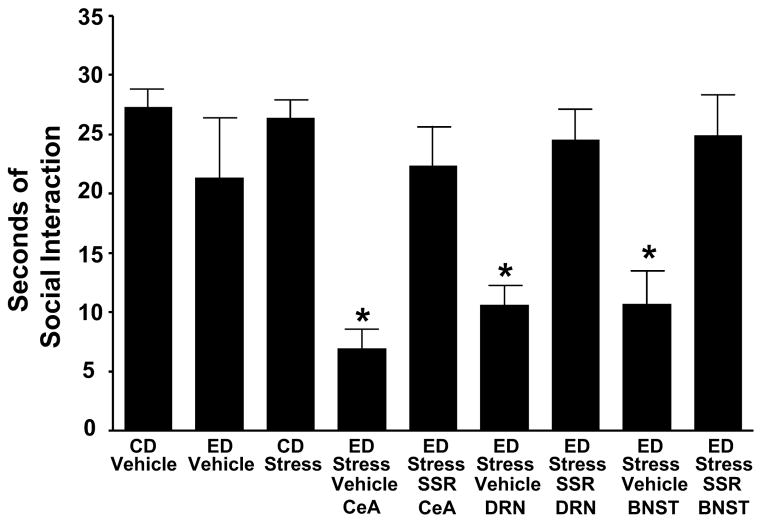Fig. 3. Microinjection of corticotrophin releasing factor 1 receptor (CRF1R) SSR125543 (SSR) into the CeA, DRN, or d-BNST before restraint stress limits sensitization of alcohol withdrawal-induced anxiety-like behavior in rats.
SSR125543 (SSR; 10 μg/0.5 μL) was microinjected into the CeA, DRN, or the d-BNST 15 min before the two weekly 60-min restraint stresses before exposure to 5 days of 4.5% alcohol (ethanol) liquid diet (ED). Social interaction (SI) was measured 5 to 6 h after the alcohol diet removal. The anxiogenic effect of stress on alcohol withdrawal-induced anxiety was blocked by the SSR microinjected in the selected brain sites. For the control diet- (CD) vehicle and ED-vehicle groups, vehicle was administered into each of the brain sites (n = 3–6 for each site). The vehicle data for each of these controls were combined because a significant change across sites was not observed. No significant effect on SI (p > 0.05) was observed during alcohol withdrawal when the CD-vehicle group was compared with the ED-vehicle group. *p < 0.001 compared with the CD-vehicle, ED-vehicle, and CD stress groups as well as the groups that received the CRF-1 receptor antagonist before the repeated stresses. [F(8,75) = 7.385, *p < 0.001]. CeA = central amygdala; DRN = dorsal raphe nucleus;
d-BNST = dorsolateral bed nucleus of the stria terminalis. Adapted from Huang et al., 2010.

